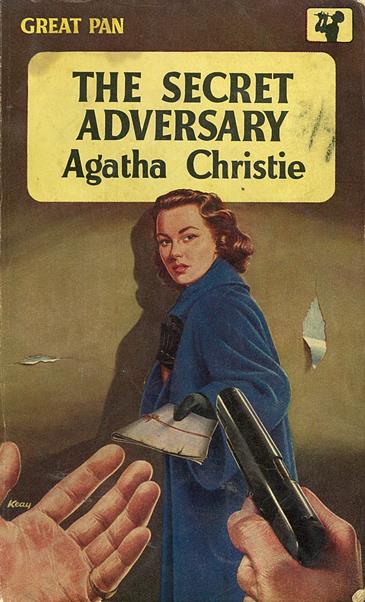I found this one at a trash and treasure market:
Curious things are happening in a students' hostel.
Various ill-assorted objects disappear--a powder compact, bath salts, an electric light bulb. A rucksack is slashed, a silk scarf is wantonly cut up.
Hercule Poirot visits the hostel. He observes the occupants closely--Colin McNabb, the flaming, redheaded medical student; dark, clever Valerie Hobhouse who works in a beauty parlour, and all the others. At first their relationships and characters, though intricate seem innocent, but Poirot is uneasy. Gradually his worst fears are confirmed, a murder is committed and one after another all sorts of ugly details come to light.
Once more Hercule Poirot--and Agatha Christie--achieve a masterpiece of detection.
Hmmm.... a "flaming" medical student!
This book is ventures into strange territory for Agatha Christie. Usually she was most at home in the world of upper-middle class England--a world of retired colonels and village clergymen--with occasional excursions into the haunts of high society. A student hostel, on the other hand, is not only less genteel than the places she usually sets her novels, but is decidedly more modern as well. First published in 1955 when Christie was nearly 65, the student characters in
Hickory Dickory Dock belong to a much younger generation than the author. In a way this book shows Christie's discomfort with the changing world of the mid-twentieth century, an unease that became more evident in her stories as the 1950s became the 1960s.
(Incidentally, are couple on the cover of this edition of
Hickory Dickory Dock are meant to be the students in question? If so, they're oddly middle-aged for undergraduates!)
















